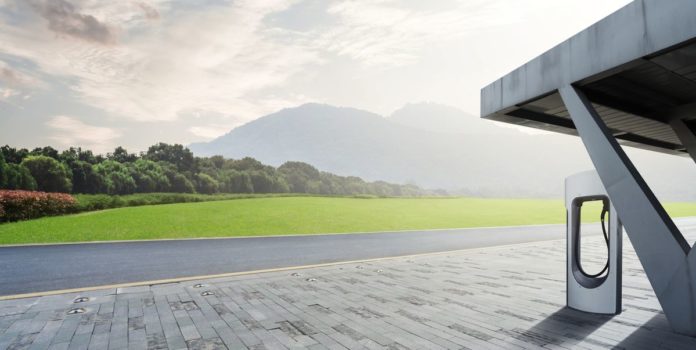There’s an epic movie scene with Steve Martin and a rental car agent when the company loses his car. Martin’s character, desperate to get home for Thanksgiving, launches 19 F-Bombs over the counter. They go nowhere. It’s 1987, and he lost the only copy of the rental contract.
The agent is no help. (Watch the clip.)
That’s what anyone thinks when driving an electric vehicle, the distance-to-empty nears zero, the warning comes on, and there’s no charging station in sight. Or perhaps you’re able to coax the car to several stations, and they’re either broken, disabled, full, or all three. It’s a sinking feeling of defeat. And truly, with any EV, there isn’t much you can do to help yourself.
Know Your EV’s Limits
Every EV has a unique threshold when alerting the driver to a low battery. Unlike a gasoline or diesel fed engine, a battery restricts power as the charge depletes. Some EVs are conservative and continue driving for 20 or more miles after the indicaed range strikes zero. In others, zero really means zero. Trust us. We’ve been there. You’ll know which EV you’re driving if you’ve reached this point.
Turn Everything Off
Switch to an Eco or similar mode, even if the EV is already automatically in a low-power state. This dulls the accelerator pedal’s responses, cuts motor output, and reduces the effectiveness of the climate control. Your climate control should be off, no matter how cold or hot it is outside. If the windows fog, open your windows. Turn off headlights or DRLs. Keep them on if absolutely necessary. You’ll need to spare every last kilowatt.
Go Slower and Use Regen
This is the oldest energy-saving trick in the book, and it always works. Accelerate gently. Stay below posted speed limits but adhere to highway minimums (usually 40 mph). At those low speeds, use your four-way flashers to alert other drivers that you’re a slow-moving vehicle. Getting hit from behind will be way worse than expending precious energy.
In EVs, regenerative braking slows the vehicle by using the electric motor or motors as a generator to feed some energy back into the battery. Most EVs have adjustable levels. Use the paddle shifters or on-screen selections to find the proper balance between braking too aggressively and freely coasting. When approaching stop signs or stop lights, get on the brake pedal earlier and slow very progressively to increase regen. This avoids using the brake rotors until the last few feet of travel. In some cases, setting the regen to zero and letting the vehicle coast might be the most effective way to hypermile.
Always Be Searching
If the major issue is locating a compatible charging station, you should not rely on the car’s navigation system. We’ve found many to be outdated (missing entire stations) or inaccurate (such as routing to a Tesla Supercharger when the car isn’t a Tesla). Use phone apps from the three major charging providers: Electrify America, EVGo, and Chargepoint. Shell Recharge proves useful in certain areas that don’t use any of those providers. PlugShare is the most comprehensive and may list random outdoor electrical outlets at businesses or even someone’s home. A Better Route Planner is also a great tool to plan out a trip and has user feedback on the status of charging stations. If you’re this desperate, you will take almost anything.
You’re Out of Power. Now What?
Anywhere in the country, AAA has been a motorist’s friend for decades and has the most reliable dispatches of tow trucks. This is true, within limits, for EV help as well. In certain areas (here’s their most recent map), AAA may be able to send a truck with a diesel generator to charge your EV so that it can reach the closest station, or can help if you’ll need a tow to that station. Before you go anywhere, though, check with your dealer to see if there is automaker roadside assistance available, check to see what other roadside assistance options there are in your area for EVs, and keep those numbers handy. If the only option is plugging into a 120-volt outlet, find one at a hotel because it will take forever to charge up.
If you’re really concerned about running out of juice in the middle of nowhere, consider a portable power station such as Anker’s Solix in the cargo hold. It costs $3400 but if you consider it stores 3.8 kWh of energy compared with 33.7 kWh in a single gallon of gas, it’s effectively a $30,000 gallon of gasoline. Expensive, yes. But it beats being stranded.
Sometimes, It’s Not Your Fault
When people complain about EV range, this is what they mean. Presumably, you have a life, and keeping an EV charged every day—unless you have a single-family home with a dedicated charger—is not always possible. You might see there’s enough range when you get home at night, but in the cold morning the vehicle’s estimate might be drastically lower due to the vehicle using energy to keep the battery pack warm. In this as in every other case, it will prevent a lot of prospective trouble if you think and plan ahead.
Clifford Atiyeh is a reporter and photographer for Car and Driver, specializing in business, government, and litigation news. He is president of the New England Motor Press Association and committed to saving both manuals and old Volvos.

